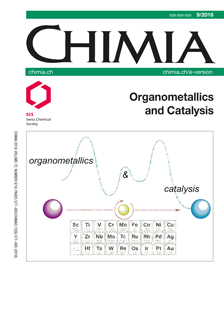A General Copper-based Photoredox Catalyst for Organic Synthesis: Scope, Application in Natural Product Synthesis and Mechanistic Insights
DOI:
https://doi.org/10.2533/chimia.2018.621Keywords:
Copper(0), Copper catalysis, Natural products, Photoredox catalysis, RadicalsAbstract
Organic transformations can broadly be classified into four categories including cationic, anionic, pericyclic and radical reactions. While the last category has been known for decades to provide remarkably efficient synthetic pathways, it has long been hampered by the need for toxic reagents, which considerably limited its impact on chemical synthesis. This situation has come to an end with the introduction of new concepts for the generation of radical species, photoredox catalysis – which simply relies on the use of a catalyst that can be activated upon visible light irradiation – certainly being the most efficient one. The state-of-the-art catalysts mostly rely on the use of ruthenium and iridium complexes and organic dyes, which still considerably limits their broad implementation in chemical processes: alternative readily available catalysts based on inexpensive, environmentally benign base metals are therefore strongly needed. Furthermore, expanding the toolbox of methods based on photoredox catalysis will facilitate the discovery of new light-mediated transformations. This article details the use of a simple copper complex which, upon activation with blue light, can initiate a broad range of radical reactions.Downloads
Published
2018-09-01
Issue
Section
Scientific Articles
License
Copyright (c) 2018 Swiss Chemical Society

This work is licensed under a Creative Commons Attribution-NonCommercial 4.0 International License.
How to Cite
[1]
C. Deldaele, B. Michelet, H. Baguia, S. Kajouj, E. Romero, C. Moucheron, G. Evano, Chimia 2018, 72, 621, DOI: 10.2533/chimia.2018.621.







